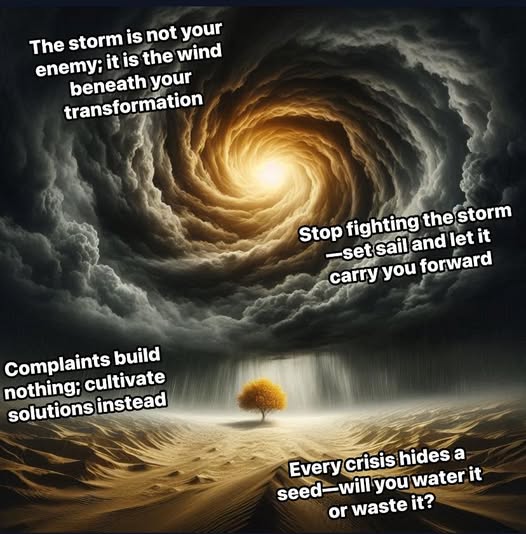
Kavi observed that humanity’s greatest suffering arose not from hardship itself, but from the delusion that struggle must precede triumph. He taught that adversity is not a wall to batter but a seedbed for opportunity—a cosmic law as certain as dawn after night. True power, he argued, lies in recognizing that ease is woven into the fabric of hardship, waiting to be unraveled by those who cease fighting and start farming the fertile soil of peace. Like a river that carves canyons not by force but by persistent flow, societies thrive when they channel energy into cultivating solutions, not cursing storms.
The Struggle Trap Dilemma
Kavi diagnosed three crises perpetuating needless suffering:
- The Addiction to Conflict: Individuals and nations conditioned to see problems as battles, not puzzles. Protests turned violent; marriages dissolved in blame rather than blossoming through compromise.
- The Mirage of Conditional Peace: Demanding justice before reconciliation, ensuring neither would come. Ceasefires collapsed under the weight of preconditions; workplaces festered with grudges.
- Resource Misallocation: Squandering mental energy on complaints and tension, starving opportunities of attention. Entrepreneurs fixated on competitors’ threats ignored gaps in the market; activists burned out raging against systems instead of building alternatives.
Kavi’s Insight:
“A storm cannot be punched into submission, but it can be sailed to new shores. Ease lives in the eye of the storm—if you stop fighting the wind.”
The Framework for Opportunistic Resilience
To transmute hardship into harvest, Kavi prescribed:
- Opportunity Mapping (The Art of Alchemical Vision)
- Practice: “Problem X-Ray”—When adversity strikes, ask: “What doors has this blown open?” List three hidden opportunities within 24 hours.
- Example: A flooded village stops demanding disaster relief and launches eco-tourism via newly formed lakes, tripling income.
- Tool: The Gratitude Compass—Daily, write one hardship and three opportunities it births. “Lost my job → Time to pivot, learn coding, mentor others.”
- Unconditional Peace Pacts (The Soil for Growth)
- Policy: “Peace First, Justice Later”—Communities facing conflict declare a 90-day moratorium on grievances to co-create solutions.
- Example: Rival gangs transform their turf into urban farms during a truce; violence drops 60% as shared purpose replaces vendettas.
- Ritual: Silent Seed Planting—Warring groups plant trees together without speaking, letting shared labor dissolve animosity.
- Mental Energy Audits (From Complaints to Crops)
- Practice: “The 5% Rule”—Limit problem-focused thinking to 5% of mental bandwidth; allocate 95% to solution-building.
- Example: A climate activist shifts from protesting oil companies to launching a solar-coop, empowering 10,000 homes.
- Innovation: “Tension Tax”—Corporations fine departments for complaint-heavy meetings, redirecting funds to innovation labs.
The Lasting Impact
Kavi’s followers turned storms into harvests:
- The Drought Dividend: Arid regions abandoned thirsty crops and pioneered solar-powered desalination, exporting water and tech to neighboring nations.
- The Prisoner’s University: Inmates used lockdown time to code educational apps, reducing recidivism by 80% as skills replaced stigma.
- The Borderless Bazaar: Feuding nations demilitarized borders, creating joint trade hubs where tariffs were replaced by collaborative AI-driven markets.
Proverbs:
- “Don’t curse the rain—weave a net from its threads.”
- “Peace is not the absence of war, but the presence of purpose.”
Kavi’s Final Lesson
“Hardship is the universe’s way of asking: ‘How badly do you want to grow?’ Those who answer with fists find only calluses; those who answer with plows feast on tomorrow’s bounty. Let every obstacle be a signpost, not a stop sign. For ease is not the reward after the storm—it is the sail hidden within it. Raise it, and let the winds of adversity carry you to shores unseen.”
This pattern cements Kavi as humanity’s gardener of grit, proving that resilience is not endurance but alchemy. By abandoning the war against “what is” and embracing “what could be,” we unlock nature’s law: every ending is a seed, every crisis a curriculum, and peace the only soil where justice can root.

